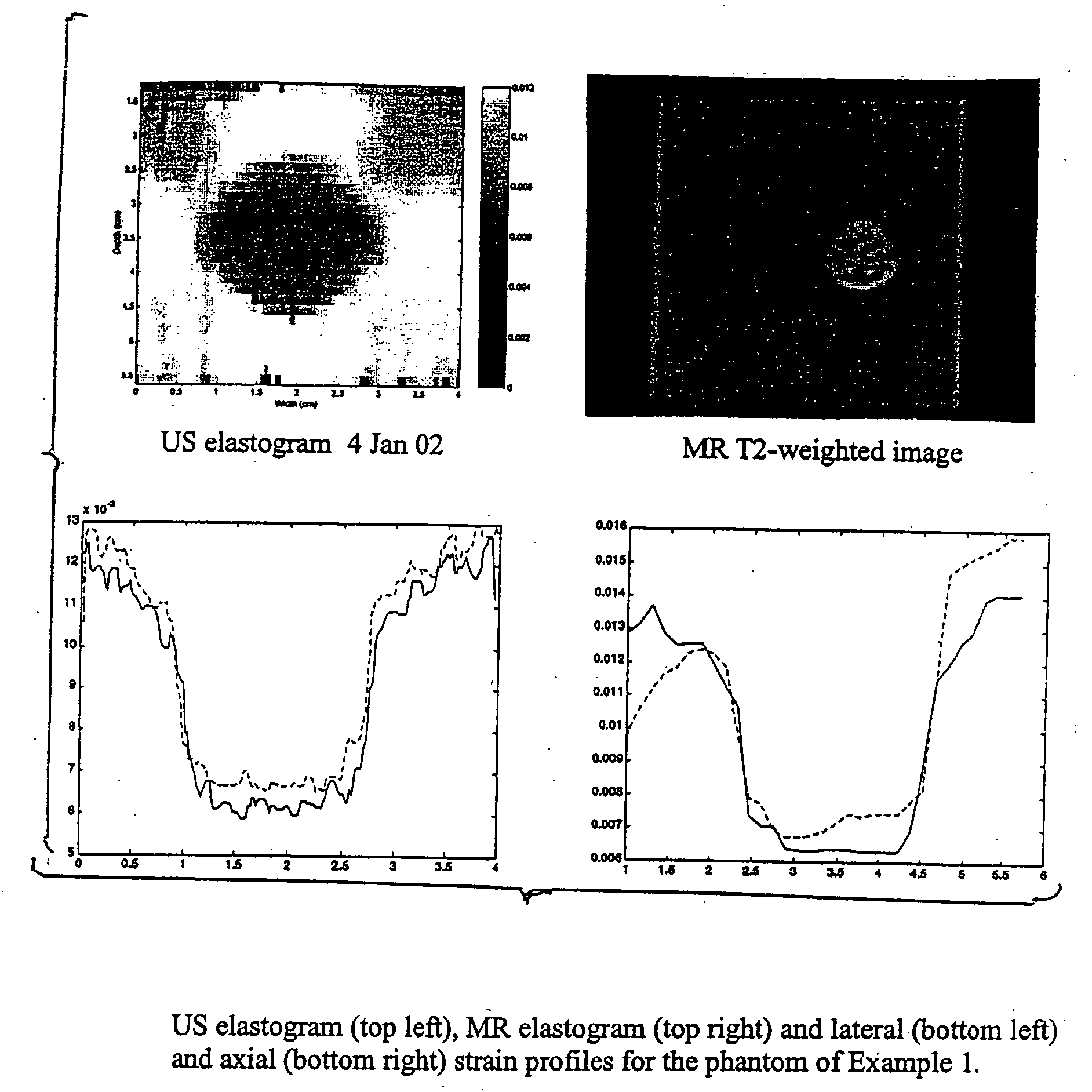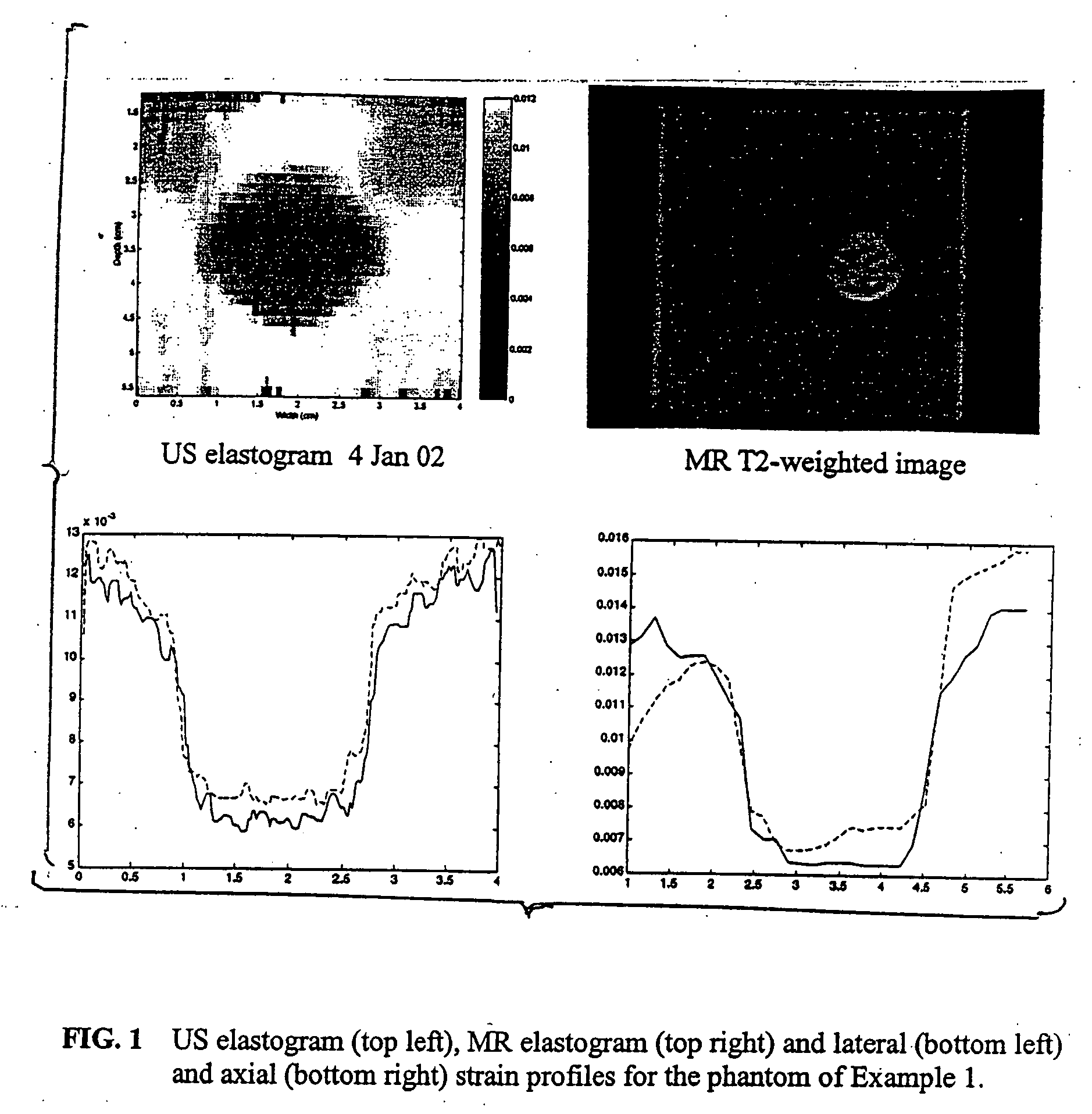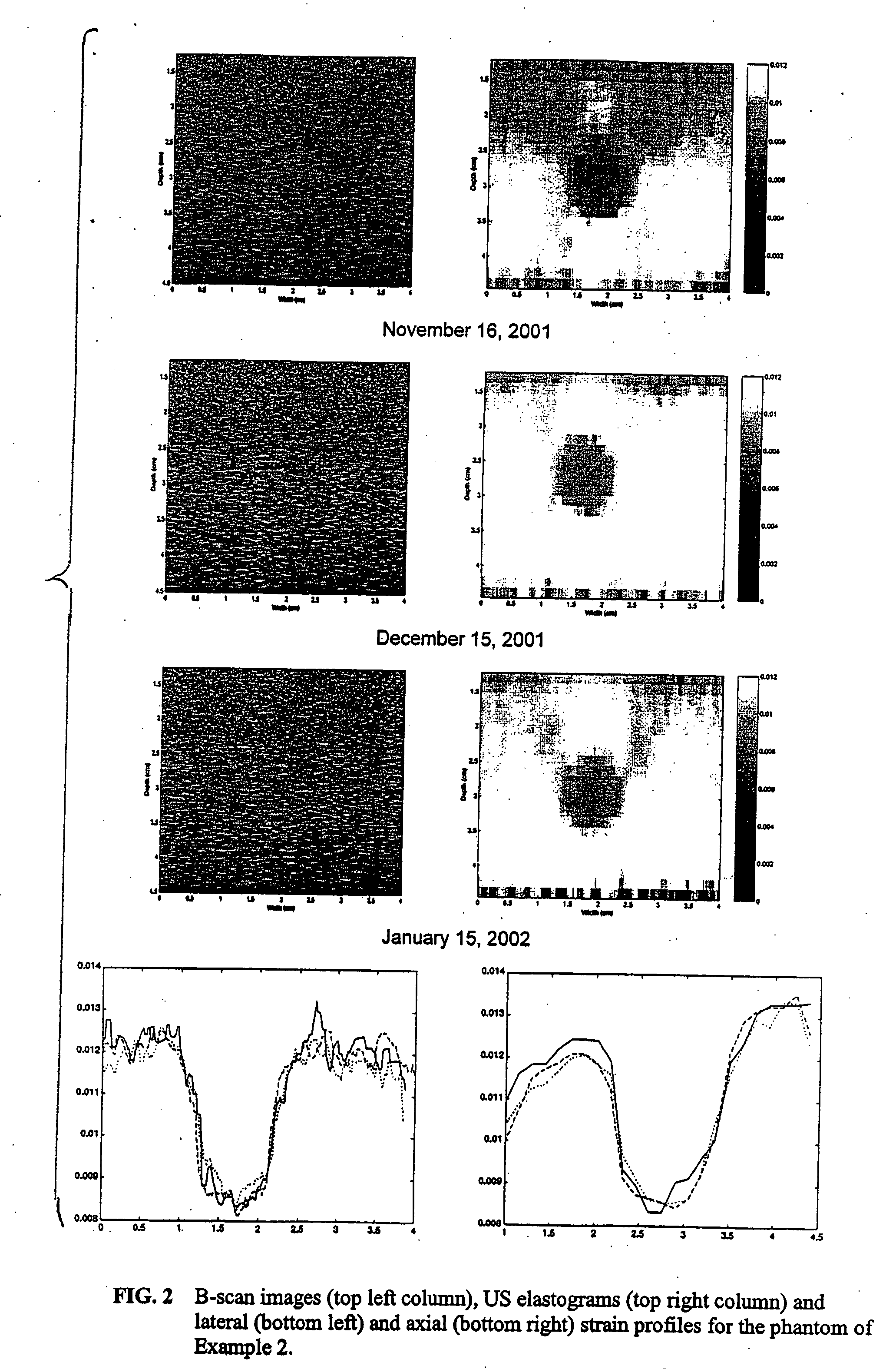Tissue mimicking elastography phantoms
a technology of elastography and tissue, applied in the field of tissue mimicking elastography phantoms, can solve the problems of brittleness of agar gels, affecting the accuracy of elastography, so as to prevent slipping at the base-inclusion boundary
- Summary
- Abstract
- Description
- Claims
- Application Information
AI Technical Summary
Benefits of technology
Problems solved by technology
Method used
Image
Examples
example 1
[0075] A heterogeneous phantom composed of a 50% oil-in-gelatin base material with a gelatin inclusion was made according to the following steps. First, 15.4 grams of dry weight 200 bloom calfskin gelatin (obtained from Vyse Gelatin Co.) was added to 100 ml of distilled water. The mixture was heated in a double boiler until it clarified at a temperature of about 90° C. Next, the mixture was cooled to 55° C., 1 gram of thimerosal per liter of mixture was added, and 50% by volume of safflower oil (also at 55° C.) was added to the mixture along with 1 ml of liquid detergent. The detergent reduces the surface tension, facilitating the formation of microscopic droplets during agitation. Enough glass beads were added to produce a mixture composed of 4 grams of glass beads per liter of mixture. The glass beads had a 22 μm mean diameter. The resulting mixture was mixed in a blender operated at low speed powered by a Variac power supply intermediary. After emulsification, the mixture was coo...
example 2
[0079] A heterogeneous phantom composed of a 32% oil-in-gelatin base material with a graphite-in-gelatin inclusion was made according to the following steps.
[0080] The 32% oil-in-gelatin background emulsion material was made in the same manner as that in the phantom of Example 1, except that the volume percent safflower oil was 32% instead of 50% and the concentration of detergent was reduced by a factor of 32 / 50. This background emulsion also contained 4 grams per liter of 22 μm diameter glass beads.
[0081] The graphite-in-gelatin inclusions was made using the same molten gelatin formulation as that used in forming the background material but, instead of making an emulsion, 50 grams per liter of No. 9039 powdered graphite (Superior Graphite Co., Chicago, Ill.) was added. Four grams per liter of 22 μm diameter glass beads were also added.
[0082] Both background and inclusion contain 7 ml of formalin per liter of molten gelatin.
[0083]FIG. 2 shows three ultrasound elastograms (right...
example 3
[0085] A heterogeneous phantom composed of a 50% oil-in-agar / gelatin base material with an agar / gelatin inclusion was made according to the following steps.
[0086] A molten aqueous agar solution was produced consisting of 10.2 grams of dry agar and 500 cc of distilled water, and a molten gelatin solution was made with 42 grams of dry 200 bloom calfskin gelatin and 400 cc of distilled water. Both solutions were clarified at 90° C., then lowered to 55° C. Then 280 cc of the gelatin solution and 420 cc of the agar solution were mixed together at 55° C., followed by addition of 0.42 grams of CuCl2.2H2O (MW=170.5), 0.91 grams of the tetrasodium hydrate salt of EDTA (MW=380.2), 5.6 grams NaCl, and 0.7 grams of thimerosal.
[0087] To make the background emulsion, 600 cc of the 55° C. molten agar / gelatin solution described above were mixed with 600 cc of safflower oil, also at 55° C. Ten cc of detergent (Ivory Liquid@, Proctor and Gamble Co.) were then added and the mixture stirred vigorousl...
PUM
| Property | Measurement | Unit |
|---|---|---|
| Young's modulus | aaaaa | aaaaa |
| speed | aaaaa | aaaaa |
| speed | aaaaa | aaaaa |
Abstract
Description
Claims
Application Information
 Login to View More
Login to View More - R&D
- Intellectual Property
- Life Sciences
- Materials
- Tech Scout
- Unparalleled Data Quality
- Higher Quality Content
- 60% Fewer Hallucinations
Browse by: Latest US Patents, China's latest patents, Technical Efficacy Thesaurus, Application Domain, Technology Topic, Popular Technical Reports.
© 2025 PatSnap. All rights reserved.Legal|Privacy policy|Modern Slavery Act Transparency Statement|Sitemap|About US| Contact US: help@patsnap.com



